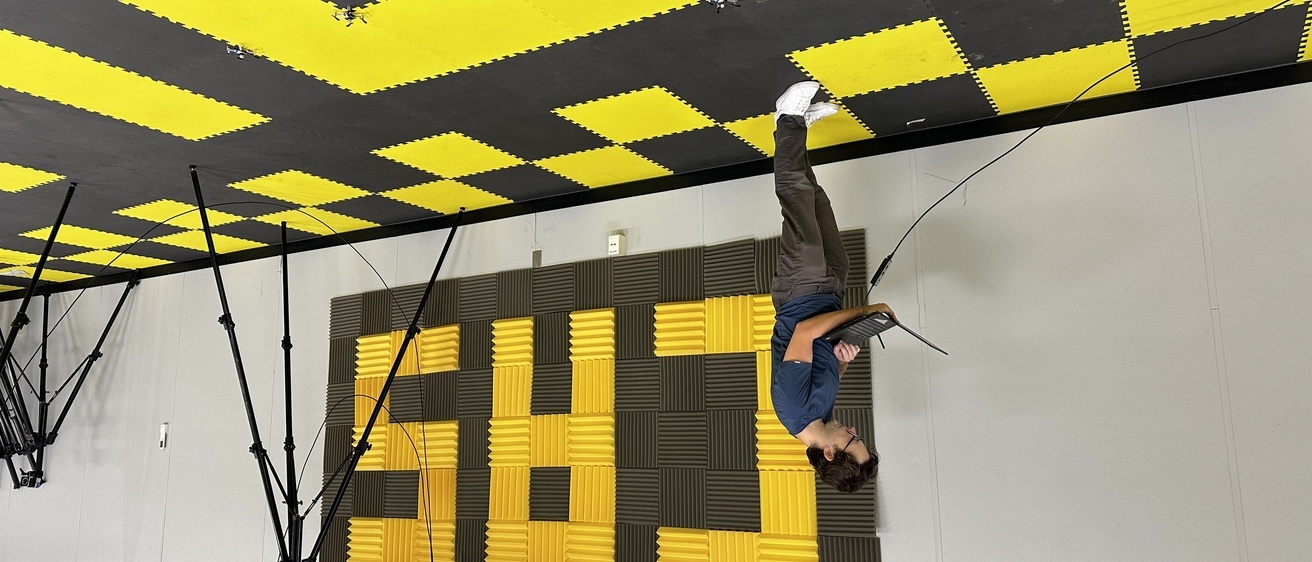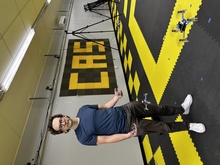
This summer, University of Iowa (UI) PhD student Gage MacLin has been exploring one of aviation's most complex puzzles: how can autonomous aircraft safely operate alongside human pilots?
Working with NASA Langley Research Center, the mechanical engineering (ME) student from Waterloo has been using a fleet of tiny drones for low stakes testing of algorithms that dictate flight missions, such as multiple drones coordinating landing on a runway.
“The question is whether autonomous aircraft can behave in a way that allows a human pilot to still feel safe and comfortable flying in the same airspace," MacLin said.
MacLin is the latest in a line of UI students mentored by Venanzio Cichella, ME associate professor, to work directly with NASA Langley. The collaboration benefits students while advancing technology for NASA Langley.
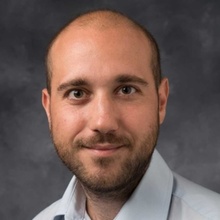
“It is important for the students to see aspects of research outside of academia,” said Cichella, who has had a relationship with NASA Langley since his own PhD studies. “They are able to see the impact more clearly by understanding the perspective of the outside world.” MacLin’s work focuses on the mathematical frameworks that teach autonomous aircraft to understand and mimic human flight patterns. The access to pilots and other NASA researchers this summer has been MacLin valuable for refining his experiments.
“I may look at a flight pattern and not see a problem, but the pilots may look and say, ‘That’s not going to work,’” MacLin said. “That’s why access to that real-time feedback is important to improving our formulas.”
The work, which is central to MacLin’s PhD, is supported with funding from the National Science Foundation and cooperative agreements with the Hampton, Virginia-based NASA Langley.
Mia Scoblic, who graduated with an ME degree in 2025 and has begun her PhD work, is a newer member of
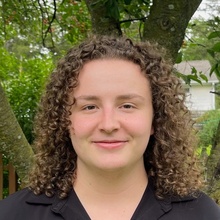
the research team and exemplifies why the relationship with NASA Langley has thrived. As one student graduates, another is ready to take over the baton.
“Seeing how much students have grown over the years gives me a clear picture of where I could be in the future,” said Scoblic, an Iowa City native who chose UI for the affordability, small but lively feel, and abundant opportunities. “I have been able to ask endless questions about both my current work and new things I am trying for the first time.”
Irene Gregory, senior researcher for advanced control at NASA Langley, describes the partnership as “very rewarding, productive, enjoyable and fun."
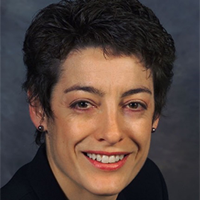
“NASA Langley has benefited through expanded capabilities, new approaches from academia working on relevant problems while applying real-world assumptions,” Gregory said. “NASA has also benefited from the flight lab and the experiments that Gage has started this summer. This is significantly faster than could have been accomplished onsite at NASA and contributed to acceleration of potential solutions to enabling advanced air mobility in our skies."
Successfully implementing this technology could lead to safer, more efficient air traffic management, reduced operational costs, and enhanced aviation safety. The research initially focuses on smaller aircraft operating at local airports, with potential future applications extending to larger commercial aircraft.
